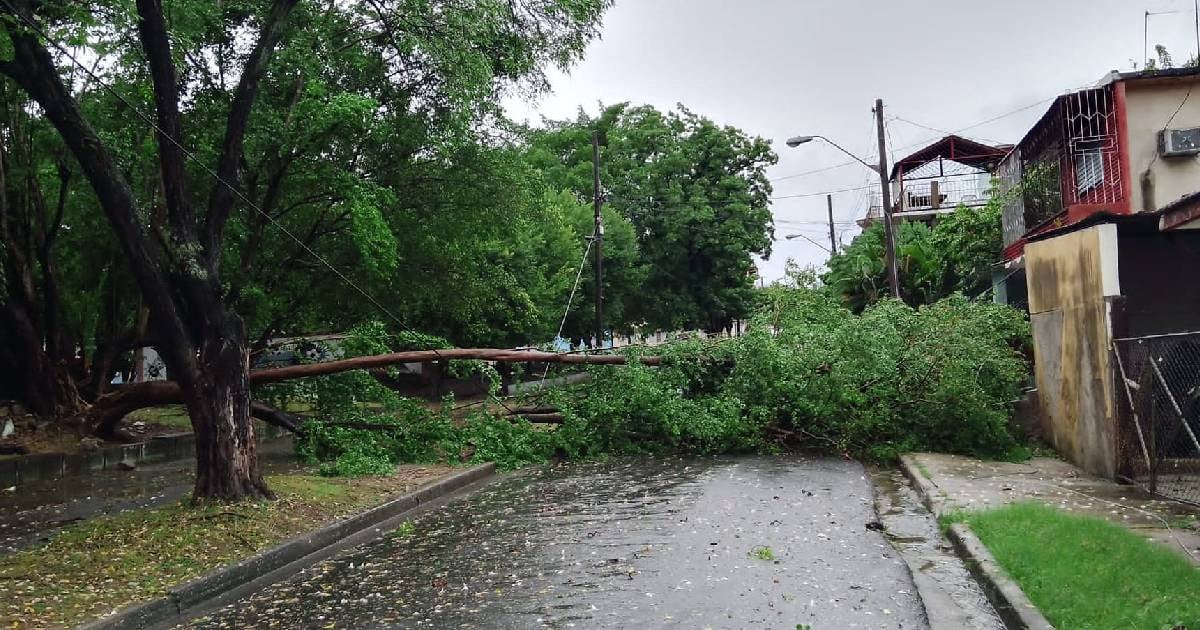
Although the feeder bands of Tropical Storm Rafael, which continues to gain organization and intensity as it moves through the Caribbean, have impacted the eastern region of Cuba, certain areas in the province of Santiago de Cuba have particularly suffered the effects of the storm.
Reports from local media indicate fallen trees, electrical damage, downed telephone poles, and heavy rains that have caused flooding in that province.
Images shared by CMKW Radio Mambí reflect the impact of this meteorological phenomenon, which threatens to arrive as a hurricane on the western part of the island.
According to the correspondence from the Cuban News Agency, María Teresa Álvarez, director of the Meteorological Center in this southeastern region, noted that light to moderate rainfall is expected in low-lying areas and heavy rainfall in mountainous regions, along with waves along the entire southern coast, with a possibility of flooding in low-lying areas of the municipal capital and Guamá.
The National Hurricane Center (NHC) alerted in its ninth bulletin that Tropical Storm Rafael has intensified and is expected to become a hurricane as it approaches or passes over the Cayman Islands in the next 12 hours.
According to the latest bulletin from the NHC, Tropical Storm Rafael is located at 19.1°N 79.6°W and is moving northwest at 15 mph (24 km/h). The recorded minimum pressure is 989 mb, and sustained maximum winds reach 70 mph (113 km/h).
Furthermore, it was warned that additional strengthening is anticipated before Rafael reaches the west of Cuba and the Isle of Youth on Wednesday, where a hurricane warning is also in effect.
The General Staff of Civil Defense in Cuba has decided to establish an alert phase starting at five in the afternoon for the provinces of Villa Clara, Cienfuegos, and Sancti Spíritus due to the possibility of being directly affected by this cyclonic system.
Since Monday afternoon, the territories from Matanzas to Pinar del Río, including the special municipality of Isla de la Juventud, have been in the same phase.
What do you think?
COMMENTFiled under: